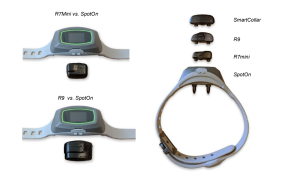Physical Dog Fences or Electronic Dog Fences: Which is Right for Your Pet
Comparing Physical and Electronic Dog Fences: Which is Right for Your Pet?
Physical Dog Fences: The Tried and Tested Option
Advantages of Physical Fences
- Visual Boundary: Clearly marks the edge of your property, serving as a visual cue for your dog and a deterrent for trespassers.
- Multipurpose Use: Provides privacy, enhances security, and prevents wildlife from entering your garden.
- Durability: High-quality materials like steel or composite wood can stand the test of time with proper maintenance.
Drawbacks of Physical Fences
- High Costs: Installation can cost £25–£300 per metre, depending on materials and design.
- Maintenance: Wooden fences require painting and sealing; metal fences may rust and need treatment.
- Escape Risks: Determined dogs can dig beneath or jump over traditional fences.
- Gate Weaknesses: Gates can be expensive, difficult to secure, and may be left open, creating weak points.
Who Benefits Most from Physical Fences?
- Homeowners seeking privacy or additional security.
- Urban or suburban properties where aesthetic appeal is a priority.
- Dogs less inclined to escape or dig.
Cost Breakdown for Traditional Fencing Options
- High Wooden Fencing: £40–£100 per metre, plus installation.
- Chain-Link Fencing: £25–£50 per metre; cost-effective but less attractive.
- Stone Walls: £100–£300 per metre; durable but costly.
- Dig-Proof Fencing: £50–£80 per metre; includes buried mesh or concrete footer.
Electronic Dog Fences: The Innovative Alternative
Advantages of Electronic Dog Fences
- Preserves Your View: Maintains the natural beauty of your surroundings without imposing physical barriers.
- Adaptable Design: Can cover irregularly shaped areas, including ponds, gardens, or wooded areas.
- Cost-Effective: Priced at £6–£10 per metre, including installation; budget-friendly for larger properties.
- Customised Training: Modern systems like those offered by DogFence.co.uk come with tailored training programmes to ensure dogs understand boundaries without stress.
- No Gates Required: Covers driveways, eliminating the need for expensive gates that can be left open.
Drawbacks of Electronic Dog Fences
- No Physical Barrier: While effective at keeping your dog in, electronic fences won’t prevent other animals or intruders from entering your property.
- Dependence on Technology: Requires ongoing maintenance, including checking the collar battery and ensuring the transmitter functions correctly.
- Training Commitment: Success relies on proper training; pet owners must invest time in helping their dog adjust to the new system.
Who Benefits Most from Electronic Fences?
- Rural properties with larger grounds (½ acre or more).
- Dogs prone to jumping over or digging under traditional fences.
- Owners prioritising unobstructed views or flexibility in boundary placement.
- Owners living near livestock or main roads.
- Owners who have physical fencing but need added dog-proof fencing.
Comparing Costs: Traditional vs. Electronic Fencing
Traditional Fencing: £25–£300 per metre, depending on material and design.
Electronic Fencing: £6–£10 per metre, covering large areas affordably and effectively.
For larger properties, electronic fences offer a practical and budget-friendly solution, saving thousands in upfront costs while ensuring your dog’s safety.
Installation Times: Traditional Fencing vs. Electronic Dog Fences
Traditional Physical Fencing: A 5-acre site typically requires substantial preparation, including leveling ground, digging post holes, and securely fixing materials like wood or chain link. This process can take 1–2 weeks or more, depending on terrain, weather conditions, and design complexity.
Electronic Dog Fences: Can cover up to 10 acres in a single day, including professional installation and boundary training setup. The process is streamlined and minimally invasive, making it a fast and efficient solution for pet owners.
Choosing an electronic dog fence not only saves time but also reduces the hassle and labour involved in securing your property.
Did You Know? The Facts About Dog Containment
- Over 85% of pet owners report feeling more confident about their dog’s safety after installing an electronic containment system.
- Studies show that dogs trained with modern electronic fences adapt to their boundaries within 2–4 weeks when training is implemented correctly.
- Traditional fences can cost up to £200 per metre for premium materials, whereas electronic fences cover larger areas at a fraction of the cost.
How DogFence.co.uk Can Help
At DogFence.co.uk, we specialise in bespoke electronic containment systems designed to suit every property and pet. With over two decades of experience, we provide:
- Customised consultations to determine the best solution for your needs.
- Professional installation to ensure seamless operation.
- Comprehensive training programmes to help your dog understand and adapt to their new boundaries.
With our systems, you’ll join thousands of pet owners across the UK who trust DogFence.co.uk to keep their dogs safe while preserving the beauty and integrity of their properties.
Supporting Responsible Dog Ownership
It’s important to note that some organisations, like the RSPCA, oppose the use of electronic dog fences. However, groups such as the Association of Responsible Dog Owners (ARDO) advocate for the responsible use of electronic training aids, including containment systems. ARDO’s mission is to educate and support dog owners in making informed decisions that ensure the safety and well-being of their pets.
Take the Next Step Towards Peace of Mind
Choosing the right fence isn’t just about practicality—it’s about safeguarding the bond between you and your pet. Let us help you find the perfect solution.
Ready to Protect Your Dog?
- 01628 476475
- 07917 034256 (call or WhatsApp)
Or request a quote online.




 collars are not only the smallest and lightest worldwide among standard wired systems but also significantly lighter and less bulky than Geo collars. While our lightweight collar weighs less than 40g, including the battery, a typical Geo collar weighs around 227g. The average battery life on our mini collar = 6 months and on our standard collar = 2 years, whereas the run time on a Geo Collar = 36 hours (8 hours tracking). The extra weight of a Geo collar is due to the hardware required to connect with orbital satellites, making it inherently larger and heavier. In terms of warranty, Geo collars come with a one-year warranty that doesn’t cover accidental damage. In contrast, our DogWatch collars come with a lifetime warranty, even covering damage from dog chews
collars are not only the smallest and lightest worldwide among standard wired systems but also significantly lighter and less bulky than Geo collars. While our lightweight collar weighs less than 40g, including the battery, a typical Geo collar weighs around 227g. The average battery life on our mini collar = 6 months and on our standard collar = 2 years, whereas the run time on a Geo Collar = 36 hours (8 hours tracking). The extra weight of a Geo collar is due to the hardware required to connect with orbital satellites, making it inherently larger and heavier. In terms of warranty, Geo collars come with a one-year warranty that doesn’t cover accidental damage. In contrast, our DogWatch collars come with a lifetime warranty, even covering damage from dog chews

